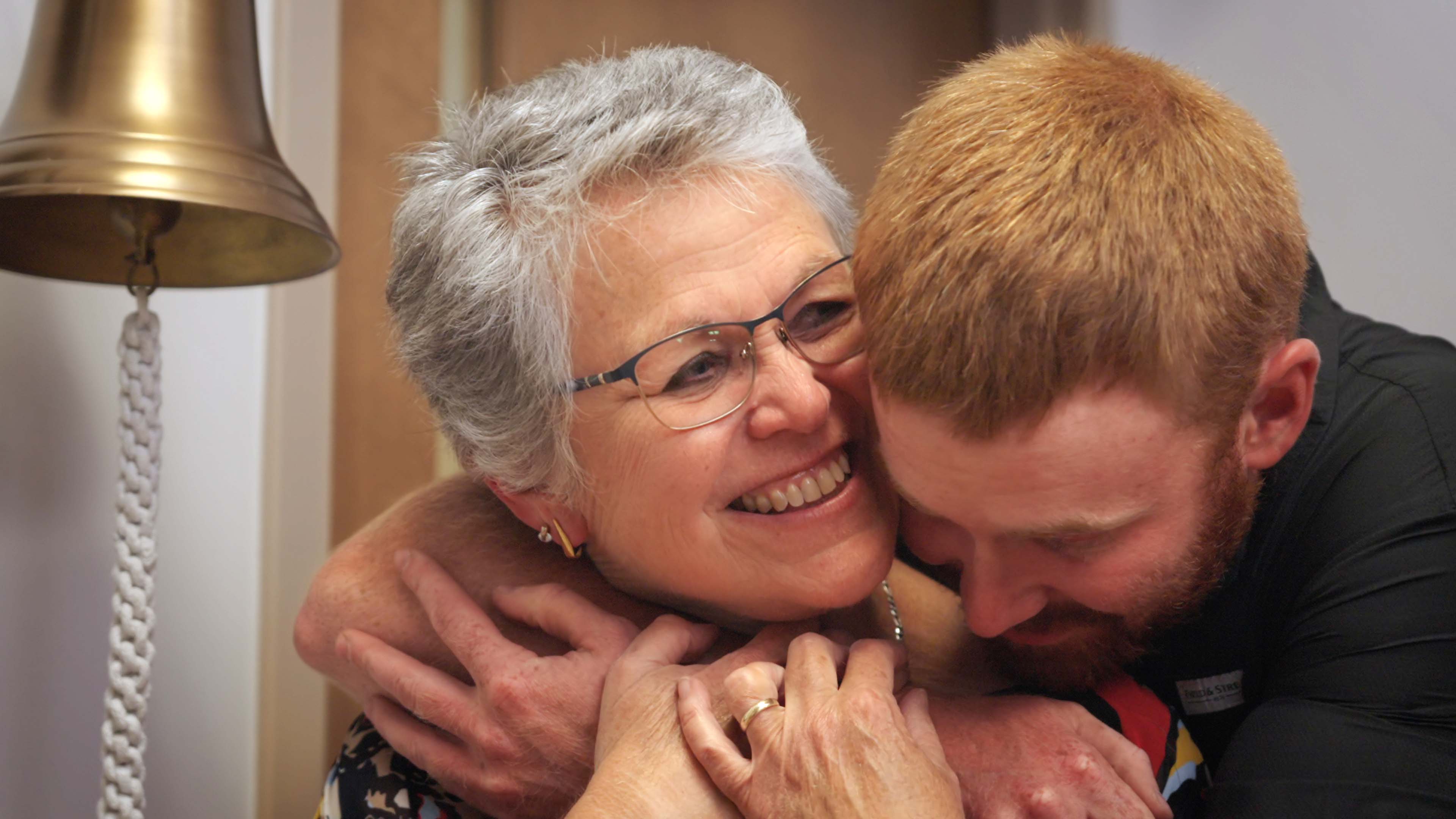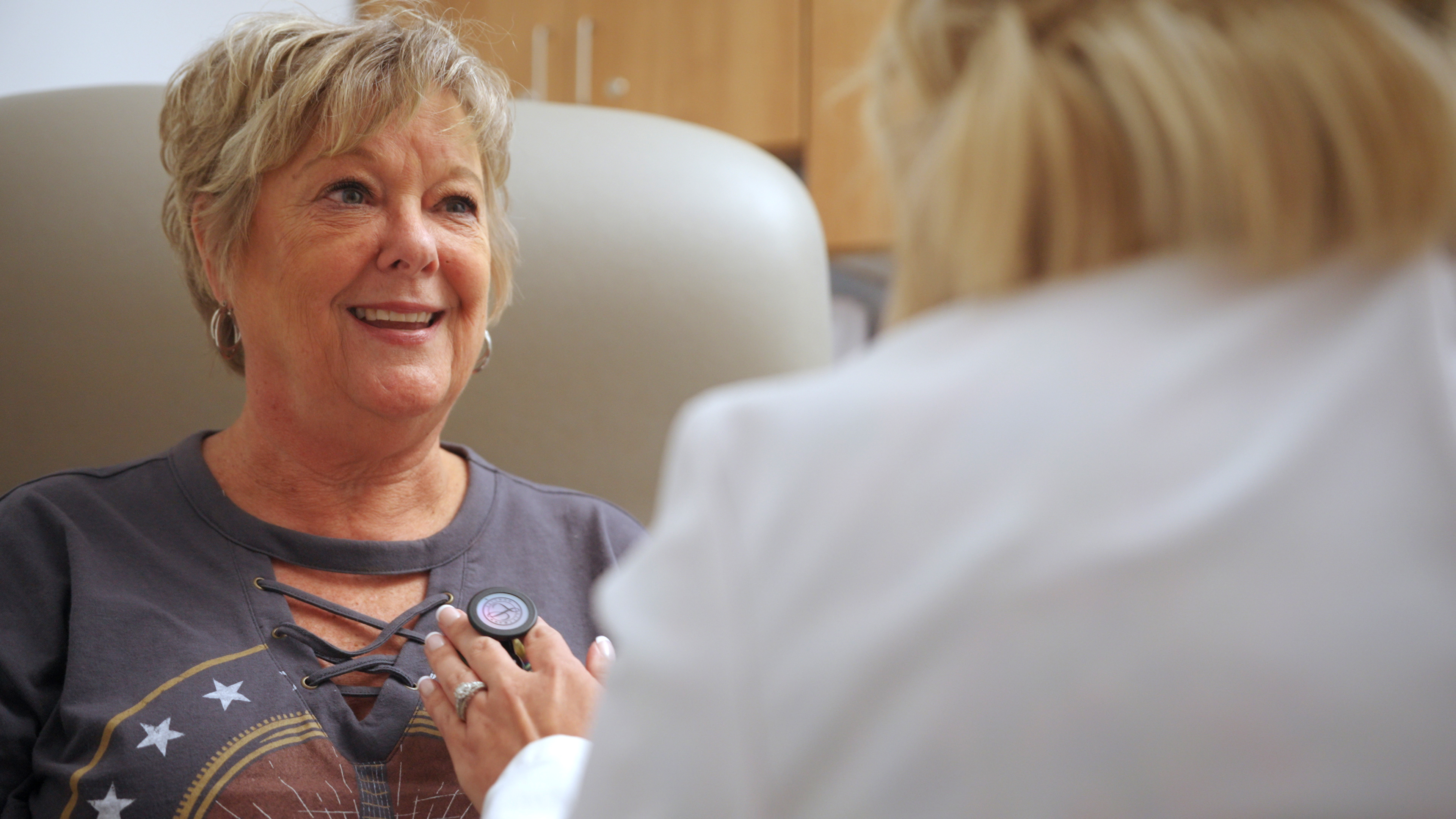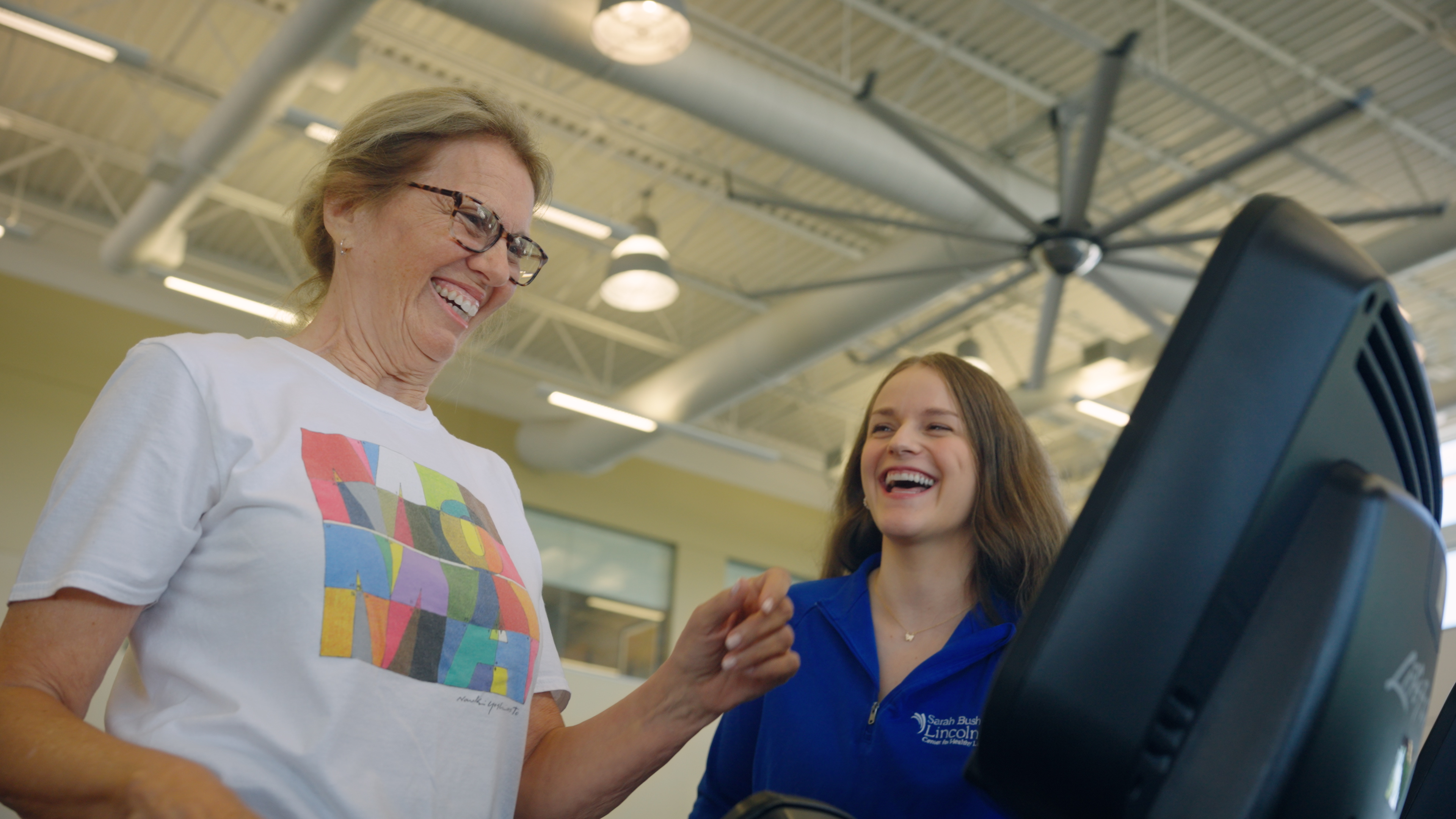People with heart failure and chronic obstructive pulmonary disease (COPD) are staying healthier and out of the hospital due in large part to a concentrated effort of Sarah Bush Lincoln clinical staff members and a grant made possible from the Office of Rural Health Policy.
For the 43 people included in the heart failure and COPD grant project, their Emergency Department visits have decreased by 51 percent and hospitalizations by 22 percent during its first year.
Care Coordination Director Carol Ray, RN, explained that there were several components in the coordinated effort to help keep this complex population healthy. One of the tools used by the staff is motivational interviewing, a technique that helps patients uncover what is preventing them from engaging in self-management of their disease.
“Struggles with attending significant family events like graduations and weddings, or the ability to walk their dog are not unusual for these people. Many find it difficult to follow a care plan. The care team helps them focus on what is important to them. With that knowledge, we are able to set the stage to help them achieve day goals that will help them follow a plan of care and achieve greater satisfaction in their day-to-day activities. Sometimes it’s not enough to tell them the risks of an untreated disease because they have to have a meaningful goal to work toward,” she said.
Other tools used by the team are Patient Activation Measurement Surveys (PAM) and the new SBL electronic medical record. PAM scores the patients’ knowledge, skills and confidence integral to help them and their support teams better manage their own health and healthcare, while the electronic medical record provides a risk score that takes into account laboratory results, history and their conditions. Care coordinators follow up with people who have a higher risk score in an effort to intervene.
Additionally, SBL began placing inpatients with these diseases on one nursing floor (4 East) and concentrated its efforts to educate the care providers about the disease process and how to spot signs and symptoms of a ‘flare up.’ “We’ve made the staff on this floor the ‘experts’ so they are more familiar with how to best care for people with these diseases and provide the most appropriate education to help keep them healthy,”
Care Coordinator Jada Temples, RN, said. Temples, who is certified by the American Association of Heart Failure Nurses, is passionate about helping her patients and sharing her expertise with staff members. “Even non-clinical staff has the education and tools to intervene. For example, the clerical staff on 4 East makes follow up appointments for the patients before they go home to ensure continuity of care,” she said.
She added that her staff members call each of their patients within 72 hours of when they go home to make sure they have what they need such as medications and follow-up doctor appointments. Additionally, they call again at day 14 and day 21 following discharge from the hospital to check in on them to ensure they are doing well. “We look for gaps and barriers in their healthcare to help keep them on track. For example, an elderly women with heart failure may be willing to follow a plan of care that calls for her to go to her follow-up appointment. However, if she doesn’t have transportation to the doctor’s office, she won’t be able to make it to the office visit.” Temples said.
Nicole Jahraus, RN, has been an active participant in the care of this population and helping other staff members on her nursing unit to better care of these patients. She explained that they created an observation checklist to help them identify symptoms, and they use the ‘teach back’ method to better ensure the patient understands care instructions.
“We’ll provide the information and ask them to explain back in their own words the instructions to make sure they fully understand, and then we answer their questions,” Jahraus said. She added that there are scales in every room that support the need for patients to weigh themselves every day and track their weight. WomenConnected, a philanthropic giving circle inside Sarah Bush Lincoln, provides scales for home use to people in need. They also receive a heart failure magnet to place on their refrigerator with important information about when to call their doctor.
In its infancy, it has already proven extremely successful. Ray explained that the CMS national benchmark for readmission rates for Congestive Heart Failure is 17.7 percent, but Sarah Bush Lincoln is hopeful the team can end the current fiscal year well below that national benchmark. “Helping people stay healthier, out of the hospital, and in their own environment is a welcome result for any hospital.”
The third leg of this three-pronged approach is the care in the Heart Center. Prairie Heart Cardiologist Michael LaMonto, DO, has provided six one-hour training sessions on heart failure for the SBL staff. SBL also offers supports like Life Vests for people with heart failure. Life Vests are external defibrillators worn by people who have the potential for sudden death.
For more information, contact Carol Ray, 217 258-2405.










